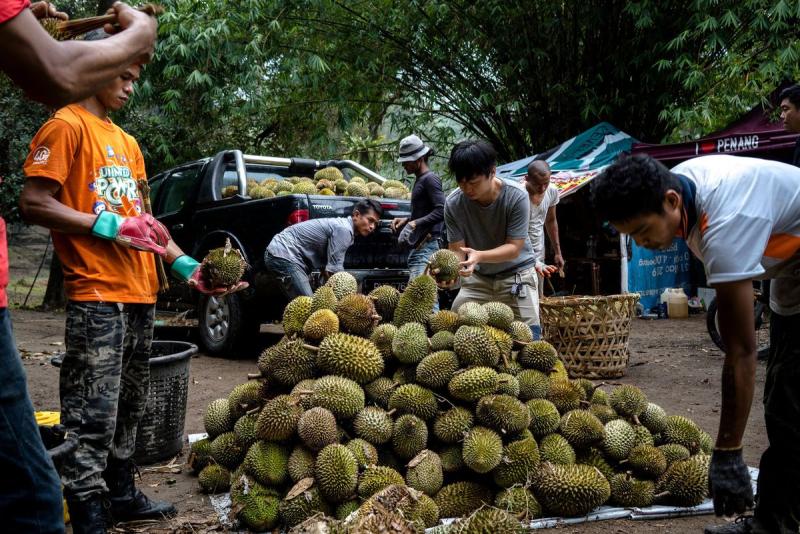Decades ago, he stole a tree branch. Now he is the Durian King



Long before he was the Durian King, Tan Eow Chong was canvassing rural Malaysia for plants he could farm when he stumbled on a roadside stand selling a curiously golden-fleshed variety of the fruit.
The seller, an elderly woman, urged Tan to have a taste, boasting that her durians were the same color as the local sultan’s palace.
Tan took one bite and was transfixed. Apart from the notorious aroma, which is often compared to rotting meat, it was nothing like the fibrous durians with large pits that he grew at home 200 miles away on Penang Island. This one was meatier, creamier and bittersweet — everything a durian connoisseur would want.
“The flesh melted in my mouth,” said Tan, who decided then that he had to grow the durian himself.
The fruit came from a nearby orchard. Tan asked whether he could have a branch to graft onto one of his trees, but the woman shooed away the idea. So that evening he returned with a villager armed with a rifle. At Tan’s instructions, and for pay, the man pruned a footlong branch with a well-placed shot.
Thirty-five years after his heist, Tan is reaping the rewards.


Above, a customer, in green shirt, orders durians at a roadside stall during the Durian Festival in Georgetown, Malaysia. At right, a worker opens a durian for customers at a roadside fruit stall. (Suzanne Lee / For The
The tree limb provided the genetics for an award-winning durian known as the Musang King, which has become Malaysia’s next cash crop and made Tan’s family durian royalty.
His success, however, came only recently — thanks to his perseverance through hard economic times and a magnate who happened to spark a Musang King obsession in China, a country whose 1.4 billion stomachs have the power to move markets.
(Los Angeles Times)
The durian is no ordinary fruit. Its thorny cantaloupe-sized husk looks like a hedgehog crossed with an avocado. Locked inside are lobes of fruit that have the look and texture of foie gras and are usually eaten raw, but can also be mixed with rice or added to pastries.
What defines durian fruit, however, is its overpowering sulfuric scent, which has led to bans from public transportation and the occasional evacuation of buildings. The odor is strong enough to penetrate the fruit’s thick shell. When the shell is cracked open, the scent can buckle a neophyte’s knees. But for the fruit’s admirers, the stench is part of the allure.
“If it doesn’t stink, it’s not durian,” Tan said.
Keep reading, long interesting story of fate, persistence and luck with lots of pictures.
 Article is LOCKED by moderator [smarty_function_ntUser_get_name: user_id or profile_id parameter required]
Article is LOCKED by moderator [smarty_function_ntUser_get_name: user_id or profile_id parameter required]



I found this fascinating.
Every fruit on this planet, no matter how ugly, difficult to open or what is smells like,
apparently has a use and a market.
While these people do not appear to be starving, you would be surprised what people eat when they ARE starving. I mean, Donner Party....just sayin'..
These don't look very appetizing but I would give it a try. I mean look at kiwi fruit....delicious, but they look like a monkey nut.
I wonder if these are sold in the USA?
LOL,
We are what we eat, eh?
Apparently in season, Hawaii ships increasing numbers to "the mainland".
and you can always order it frozen.
Who knew?
( probably my next door neighbor who is Thai )
Yea, they are not a "pretty" fruit, but have to admit they are pretty damn good.
Familiarity breeds acceptance.